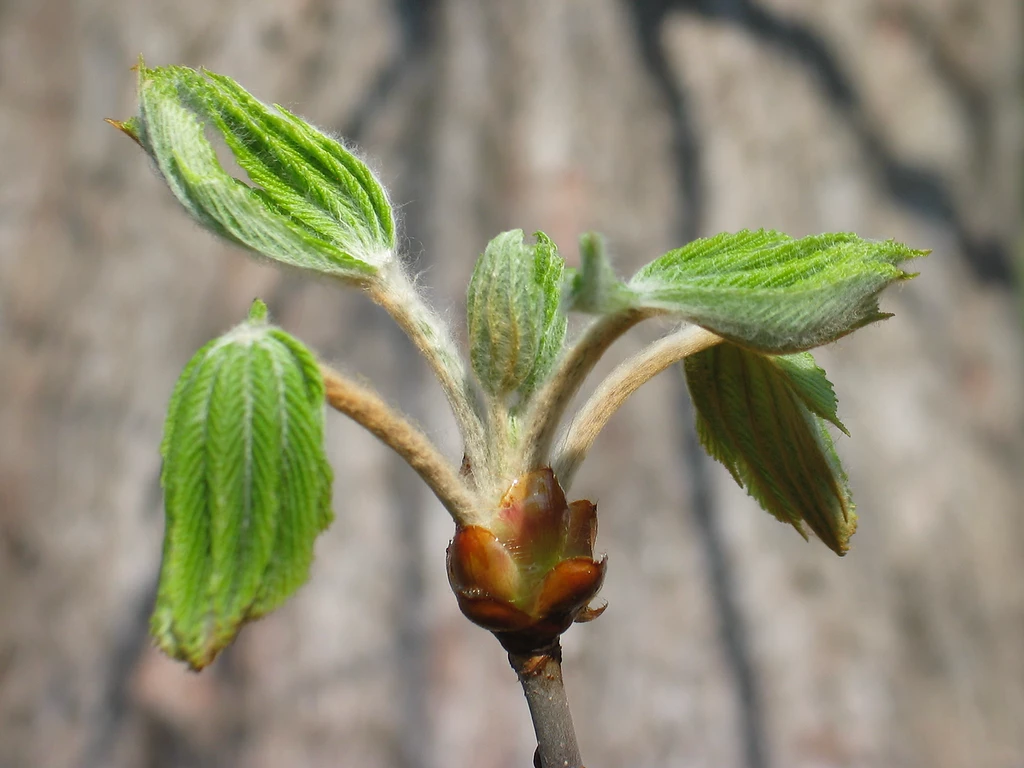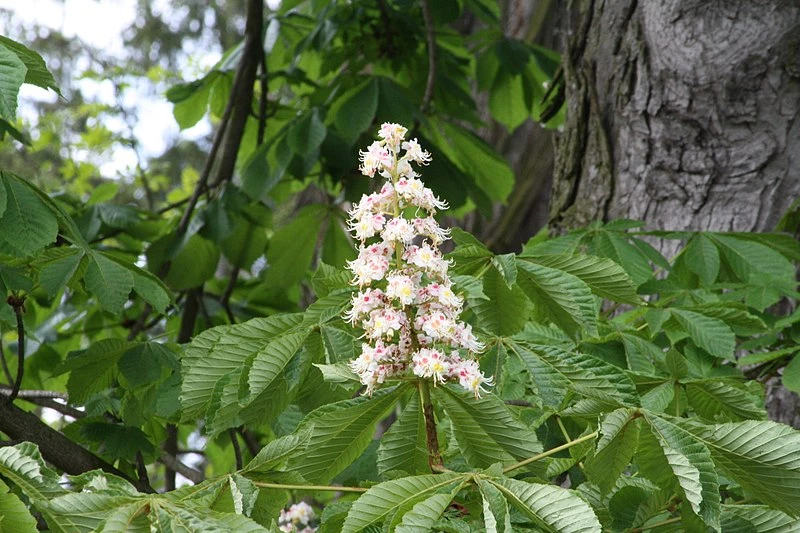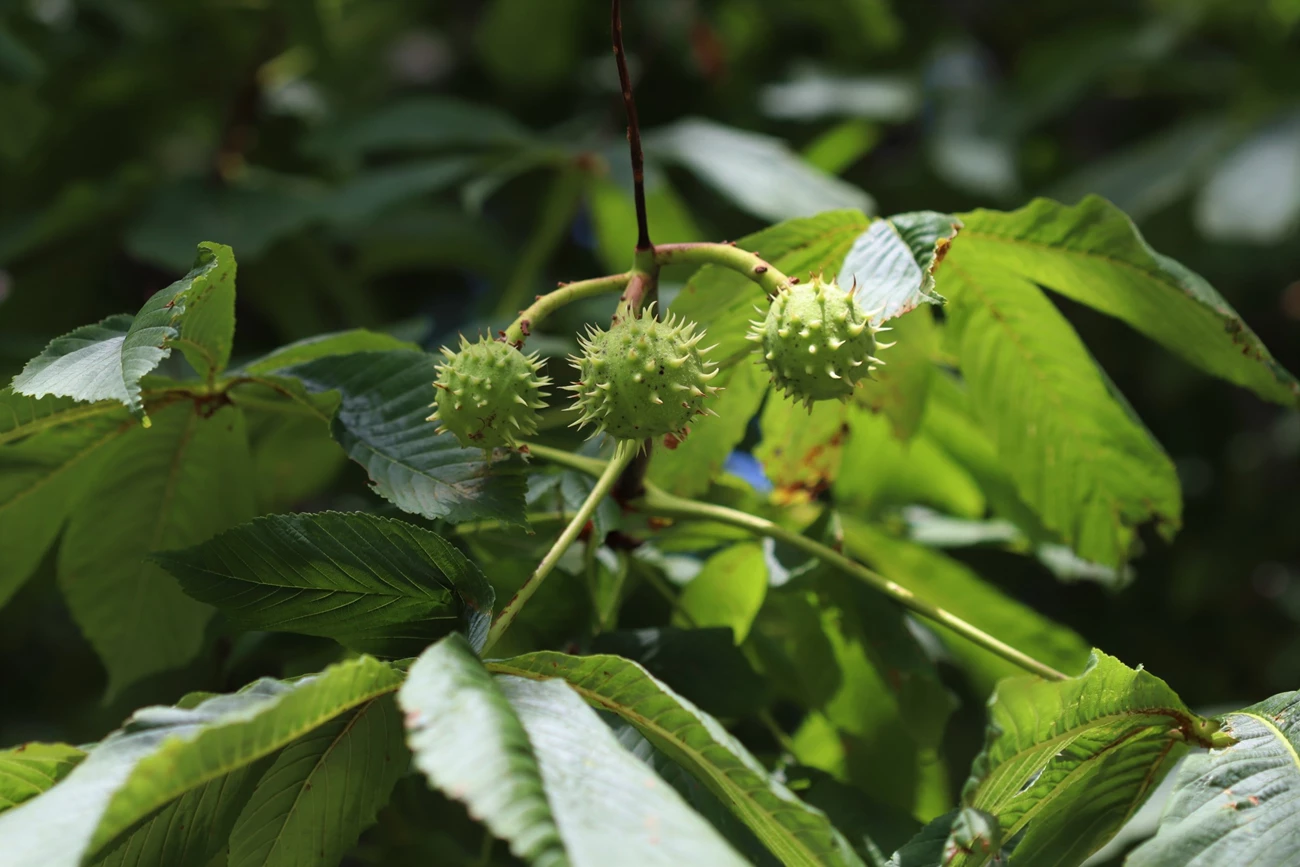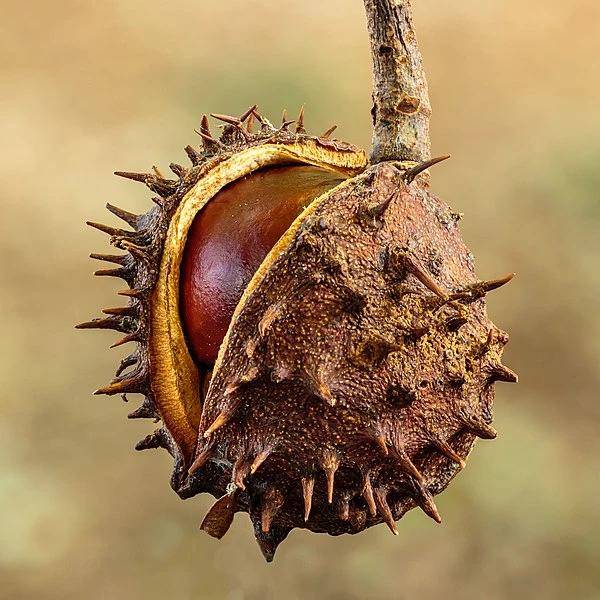Last updated: October 28, 2022
Article
Horse Chestnut
Horse Chestnut (Aesculus hippocastanum)
Identification
Large deciduous tree that also goes by the name Buckeye or European horse chestnut. Leaves are opposite, complex, and grow in a palmate pattern; meaning that leaflets are arranged around a central point. Each leaf has five leaflets; these leaflets are large, deeply textured, and paddle-shaped. The margin, or edge, of the leaf has fine but ragged serrations. White flowers in the spring turn into the spiky green balls pictured below. These balls encase the tree’s fruit and reveal a shiny brown nut when opened.
Examples:

NPS Photo/ W. Kaselow

Ellen G. Denny, CC BY-NC-SA 4.0

Frettie, Wikimedia Commons CC BY 3.0

NPS Photo/ W. Kaselow

Dominicus Johannes Bergsma, Wikimedia Commons, CC BY-SA 4.0

Tsyganov Sergey, CC BY-SA 4.0
